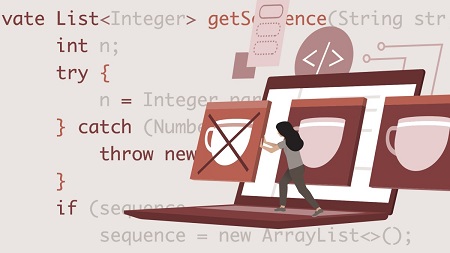
English | MP4 | AVC 1280×720 | AAC 44KHz 2ch | 1h 10m | 216 MB
As you build any application, you can’t just assume that everything will run as expected. There are so many things that could cause your applications to not function properly or even crash. This course aims to teach developers how to handle such unforeseen scenarios in applications. Join instructor Cecili Reid as she teaches you the different types of exceptions, how to handle exceptions, and how to test an application to ensure it handles exceptions as expected. Cecili uses a sample Spring Boot web app as a case study and walks through practical scenarios where you’d want to use exception handling in that application. She starts with an initial application that doesn’t have exception handling mechanisms, and as she walks through each concept, she shows you how to improve the application by applying the concepts taught in each chapter. Cecili also shares some best practices to follow when handling exceptions in your applications.
Table of Contents
Introduction
1 Why bother with exception handling
2 What are throwables
1. Errors in Java
3 What are errors
4 Error Uncaught StackOverflowError
2. Exceptions in Java
5 What are exceptions
6 Exception IOException
7 Exception FileNotFoundException
8 Challenge Catch and handle two exceptions
9 Solution Catch and handle two exceptions
3. Runtime Exceptions in Java
10 What are runtime exceptions
11 Runtime exception Return NumberFormatException to user
12 Challenge Handle an ArithmeticException
13 Solution Handle an ArithmeticException
14 Runtime exception Handling of NullPointerException
15 Runtime exception Unknown runtime exception
16 Challenge Handle potential runtime exceptions
17 Solution Handle potential runtime exceptions
Conclusion
18 Next steps with exception handling
Resolve the captcha to access the links!